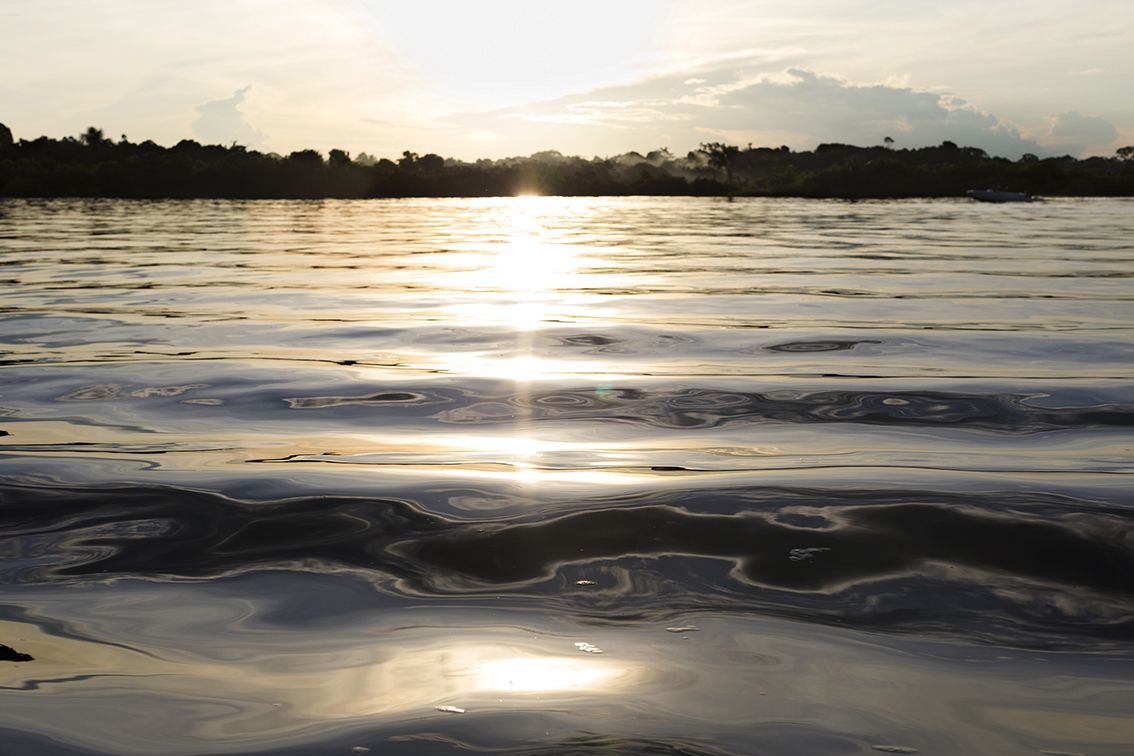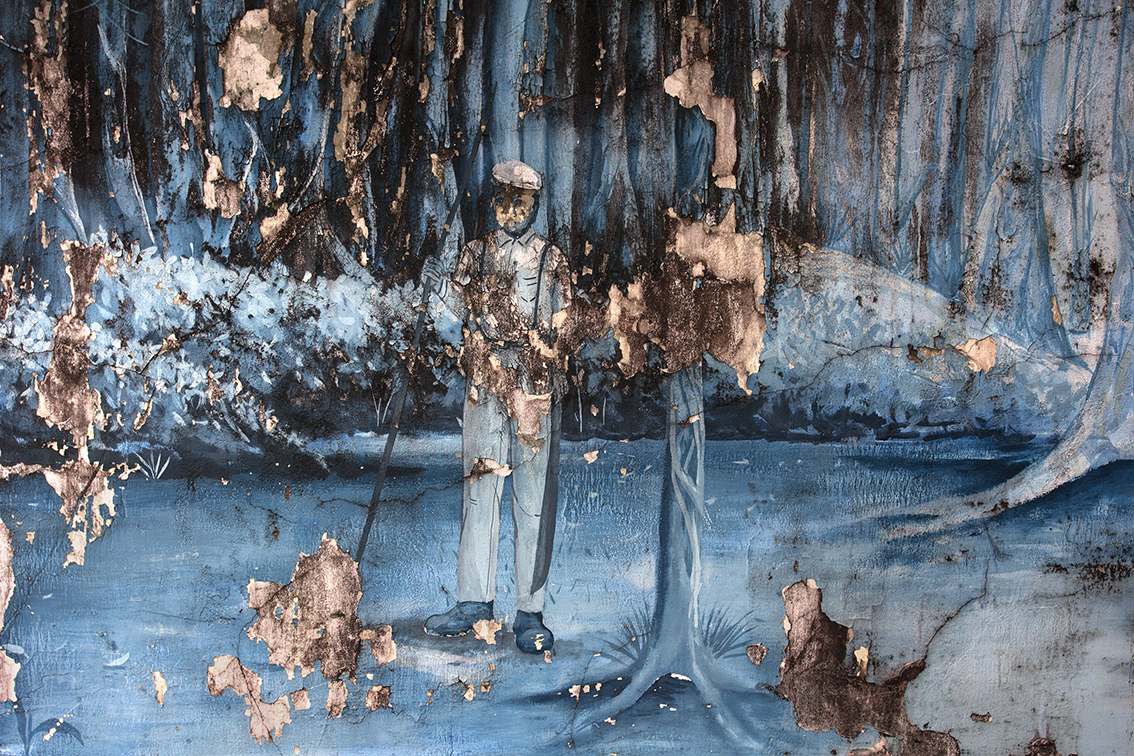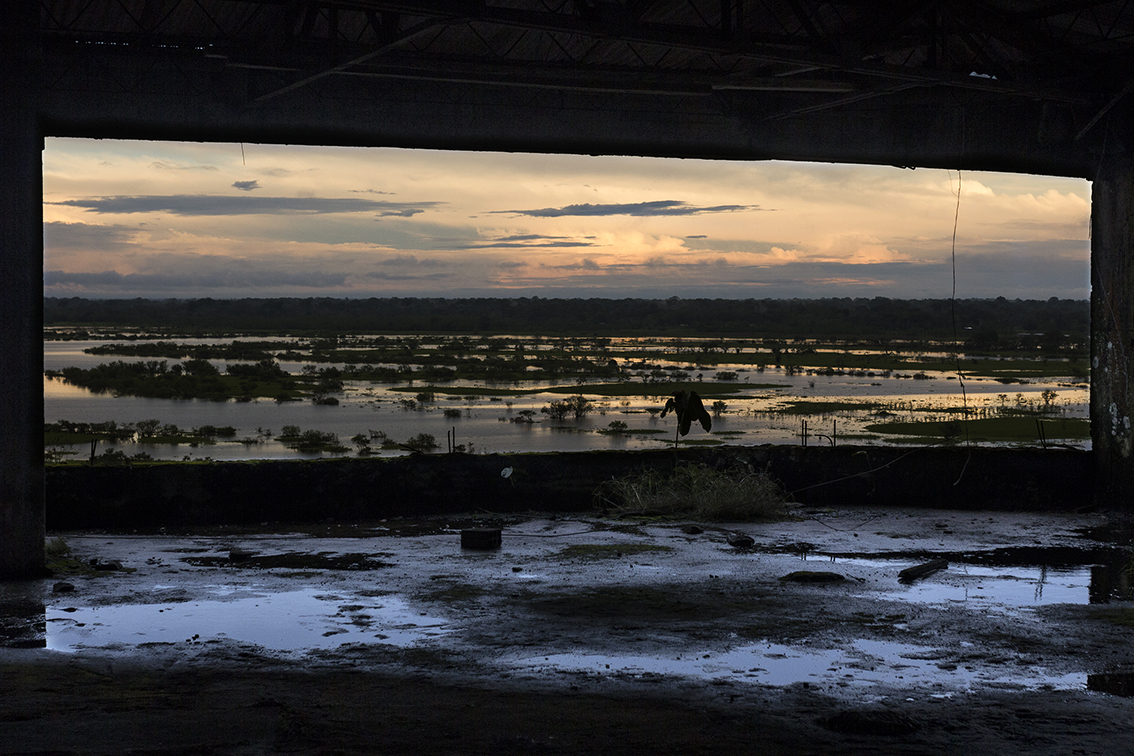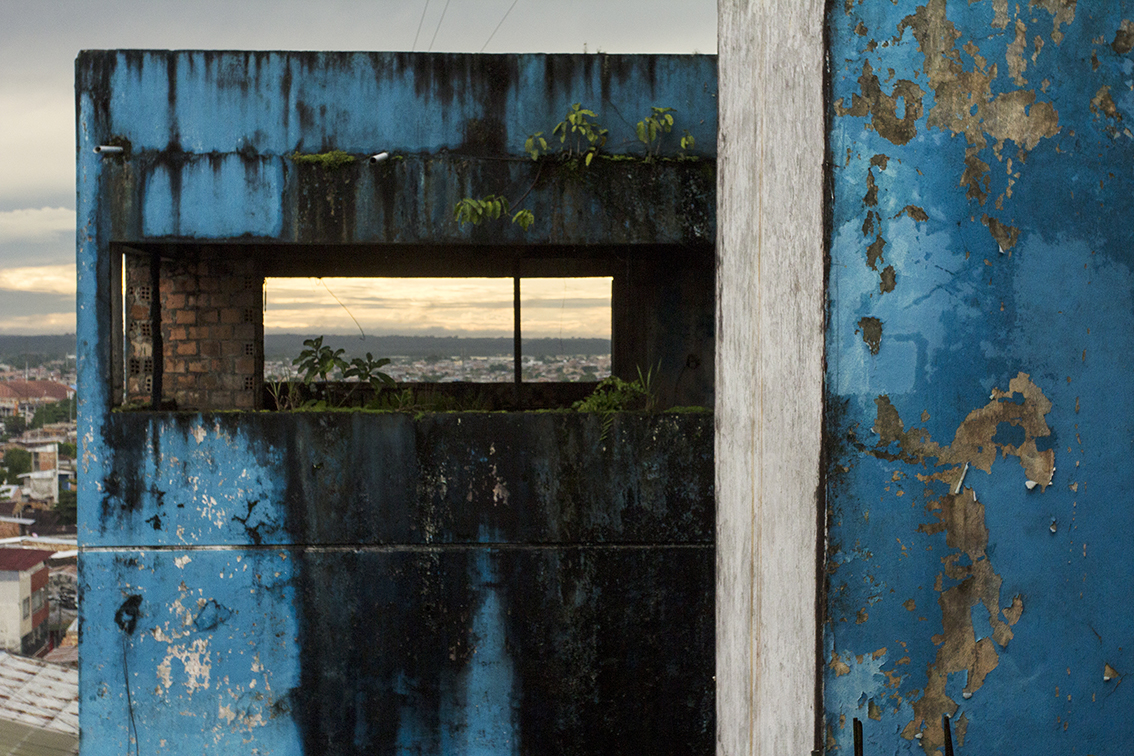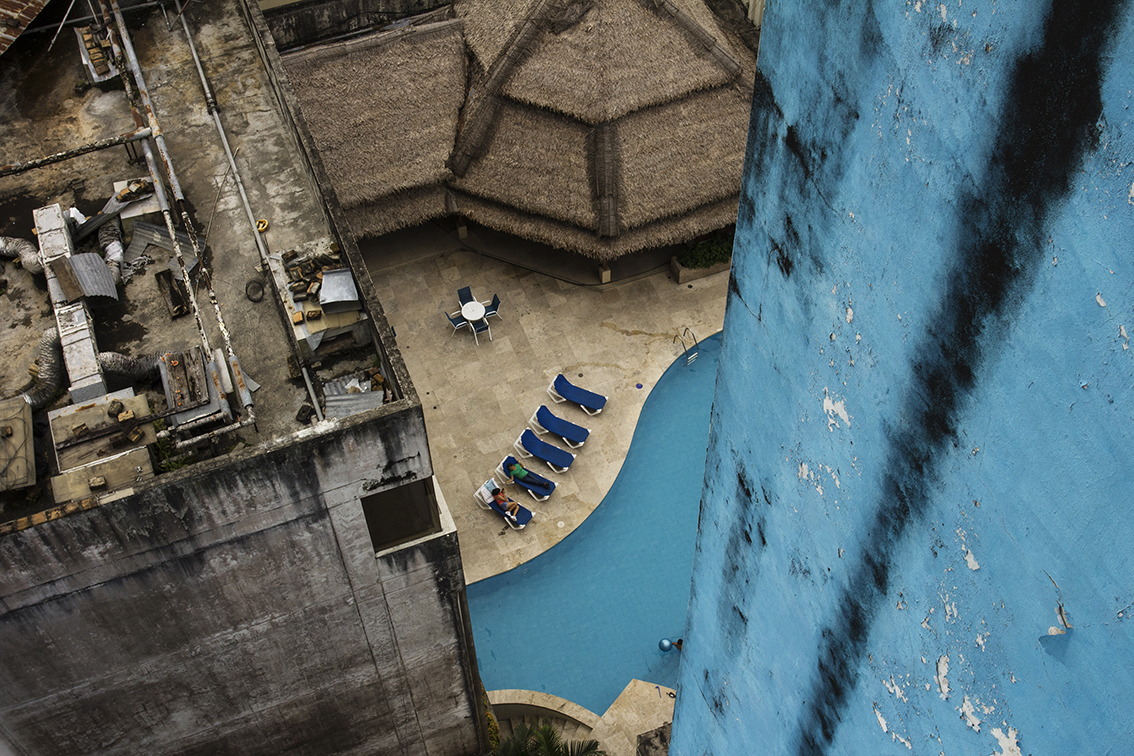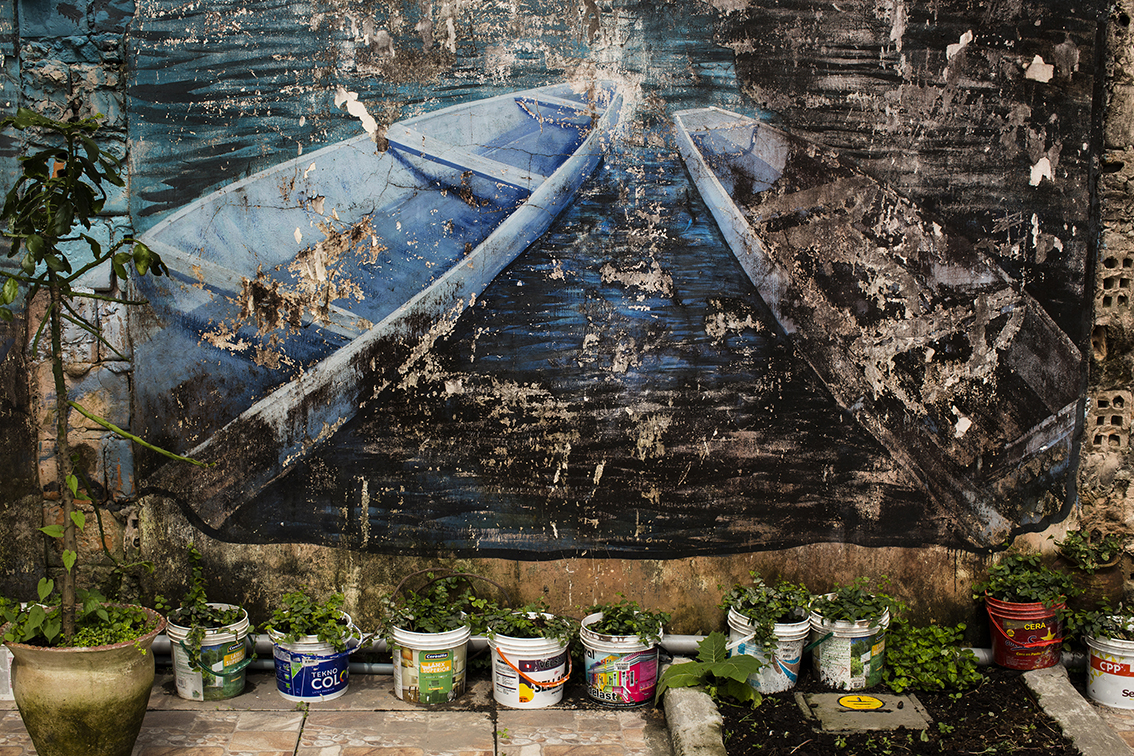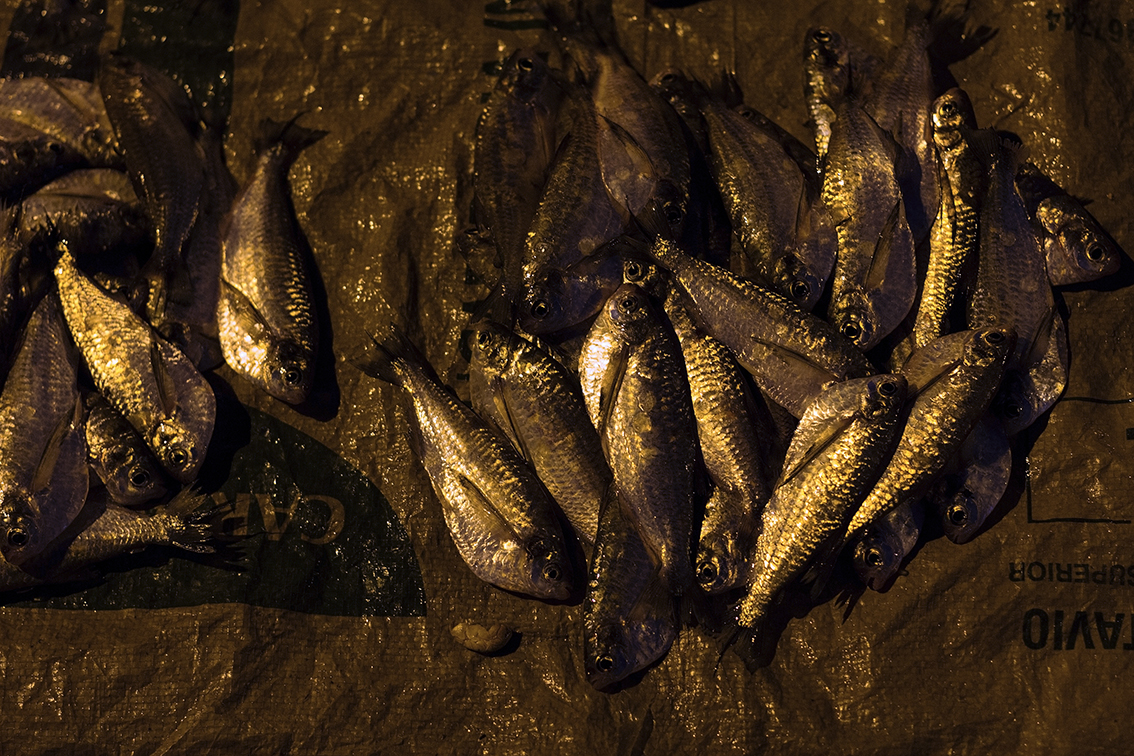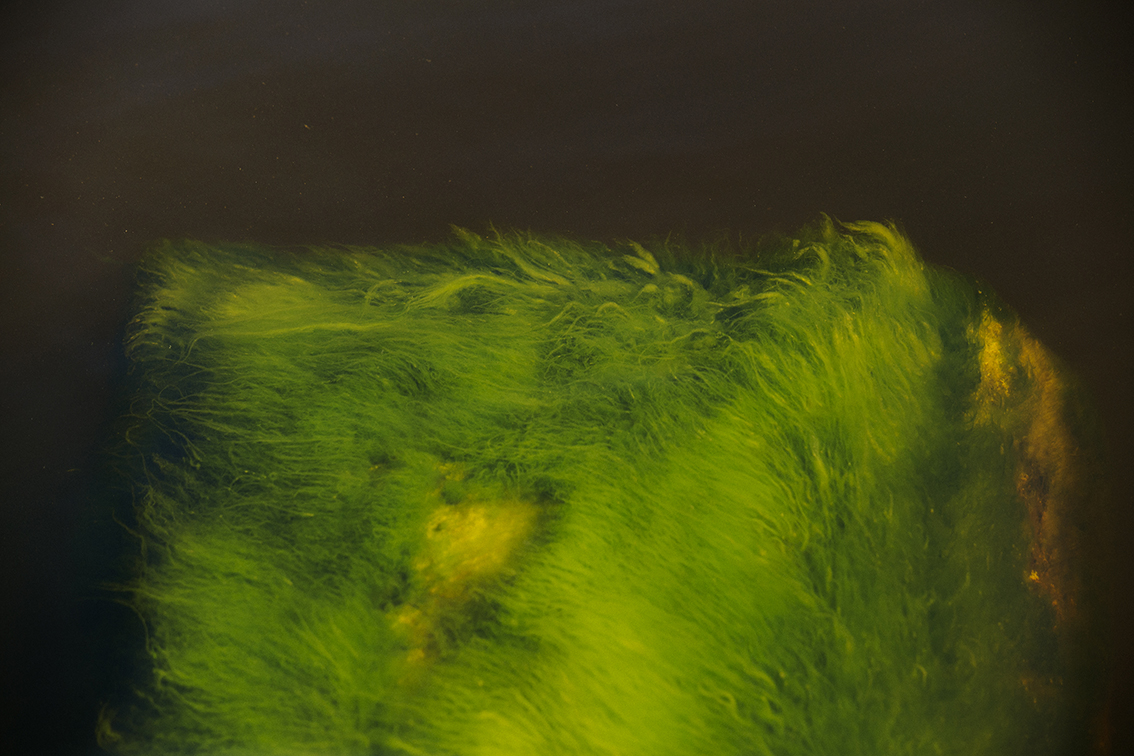Isla azul
Láminas de Iquitos
Iquitos, alguna vez la ciudad amazónica más rica del continente, es un lugar fuera de órbita. No hay caminos ni carreteras que te lleven hacia ella. El vuelo del avión devela una urbe atravesada por venas que se extienden como serpientes en medio de la vegetación.
Iquitos fue la ciudad-puerto protagonista, junto a Manaos, de la Fiebre del Caucho (1880-1918), uno de los periodos de la historia peruana más alejados de nuestra memoria. La Fiebre del Caucho significó devastación, masacres y torturas para la población amazónica. Paradójicamente, sólo pudieron ser visibilizadas con las investigaciones y la publicación de El Libro Azul Británico, informe elaborado por el cónsul inglés Sir Roger Casement.
De esa época queda una gran herida. Se quebró el orden cultural nativo, se destruyeron los clanes y sus procesos de transmisión de saberes y conocimientos.
Hoy Iquitos convive con los restos arquitectónicos europeos y sus paredes explotan de historias. El Edificio Azul descansa enorme bajo el cielo también azul. Incomoda por ser una gran mole del absurdo, de la corrupción, del abandono. Es mi puerta de entrada en este proyecto y el que tercamente me impone su color.
Las fotografías históricas cumplieron una función justificadora de la explotación. Fueron manipuladas en beneficio de los caucheros, se mostraba al indígena como un salvaje y al explotador como un gran civilizador.
La oportunidad de acceder a uno de esos archivos despertó en mí la intención de reutilizar las imágenes, cambiando su función originaria, creando puentes de memoria, revelando identidades, descubriendo íconos antiguos y alimentando el presente con nuevas historias.
Blue Island
Illustrations and tree bark from Iquitos
A visual arts project about Iquitos and the Rubber Trade
By Malu Cabellos Damian
Iquitos, once the richest city in the Amazon, is now a forgotten place. There are no highways or roads that will take you there.
The plane flight reveals a metropolis crisscrossed by veins that extend like serpents in the middle of the vegetation.
Iquitos and Manaos were the port-cities at the center of the Rubber Fever or Rubber Boom (1880-1918), one of the periods of Peruvian history most removed from our collective memory. The Rubber Boom meant devastation, massacres and torture for the indigenous population of the Amazon region. Paradoxically these abuses were first brought to light in the British Blue Book, a report by the British consul Sir Roger Casement.
A great wound remains from this epoch. The indigenous cultural order was broken, along with the process of transmitting knowledge and beliefs through the clans.
Today Iquitos coexists with European archeological remains and its walls explode with stories. The Blue Building rests large under a blue sky. It is an embarrassment, a big absurd mass of corruption and abandonment. It is my doorway to this project, and stubbornly imposes its color.
The historic photographs served the function of justifying the exploitation. They were manipulated to benefit the rubber traders – they portrayed the indigenous people as savage and the exploiter as a great civilizer.
The opportunity to access one of these archives awakened in me the desire to reuse the images, changing their original function, creating bridges of memory, revealing identities, discovering ancient icons and feeding the present with new stories.
